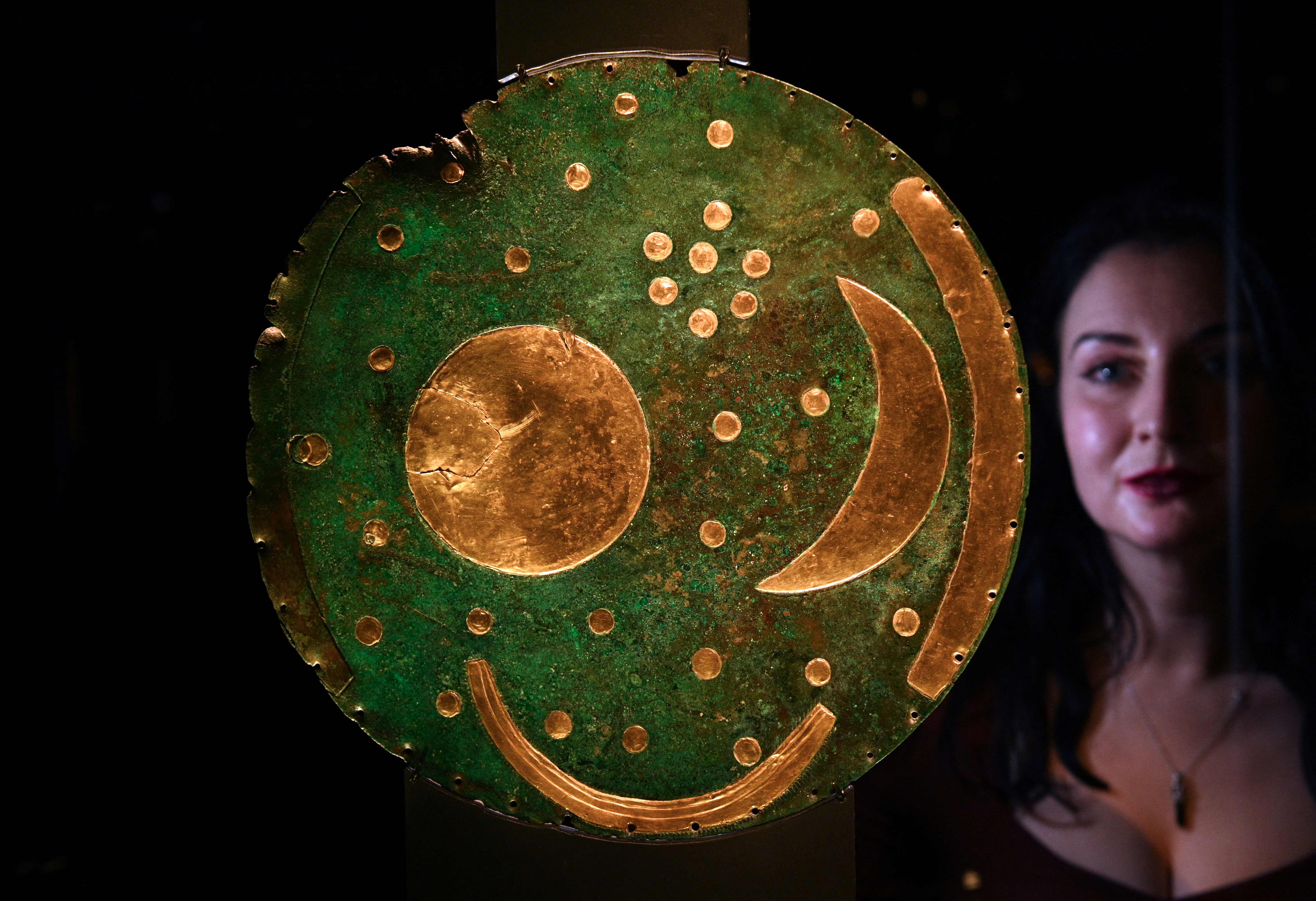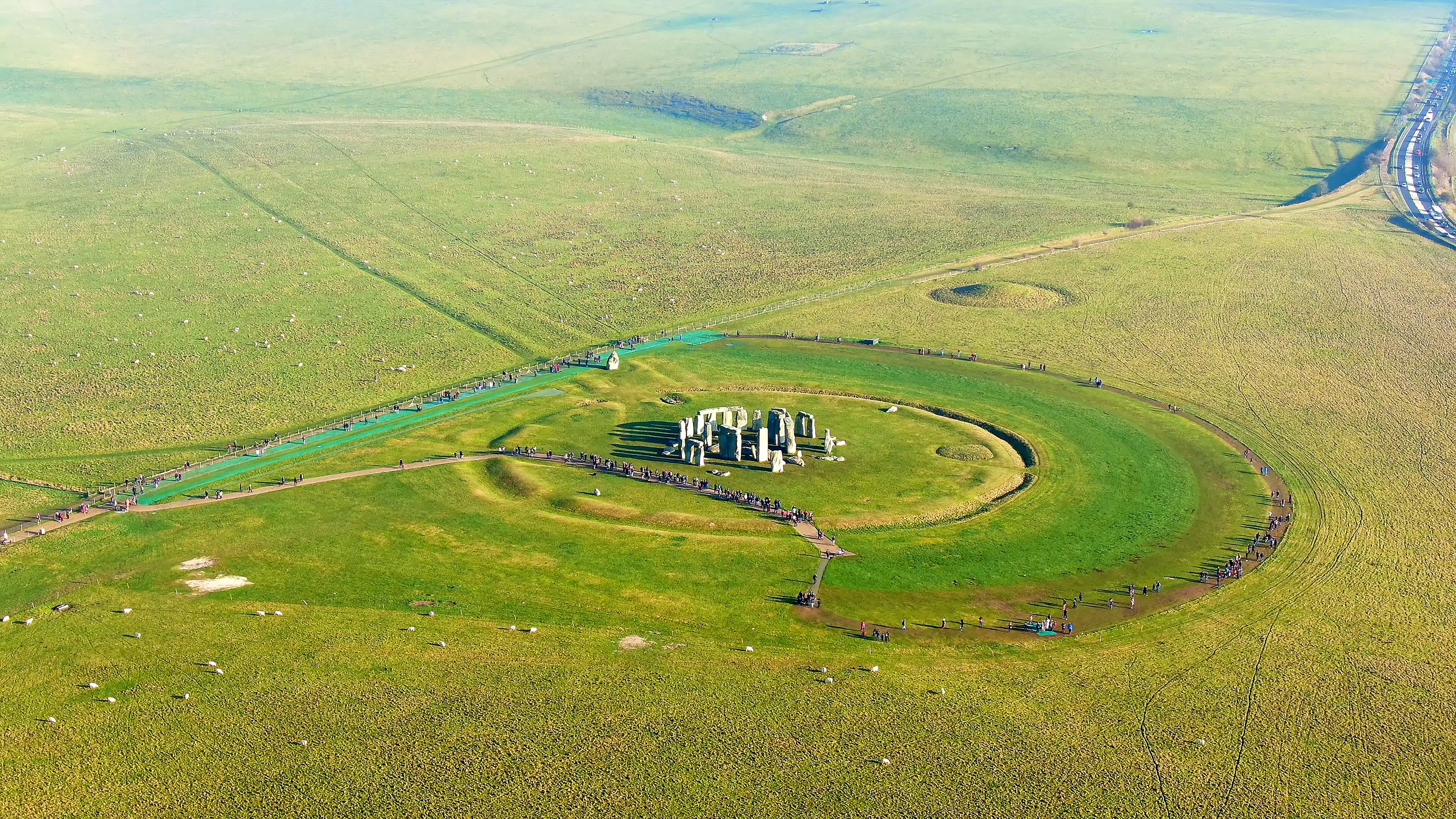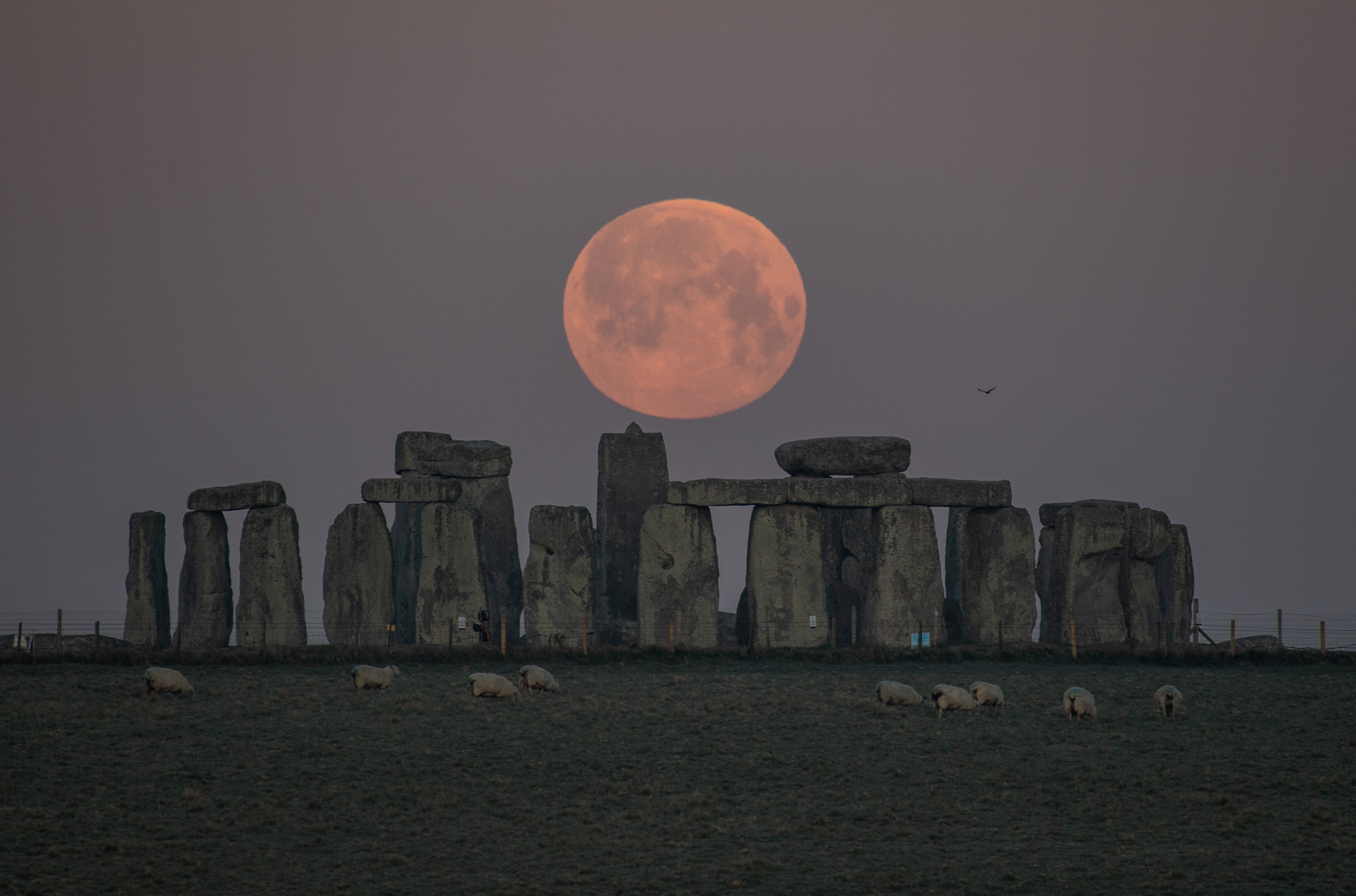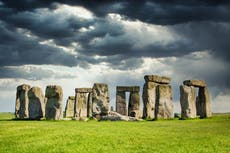The Independent's journalism is supported by our readers. When you purchase through links on our site, we may earn commission.
Pillars of the community: Is the mystery of Stonehenge really that complicated?
Some believe it to be an astronomical calculator, others say it’s a landing pad for aliens. Farah Nayeri looks at recent discoveries to see if we’re any closer to knowing why the ancient monument was built

In 2003, Canadian gynaecologist Anthony Perks came up with an anatomical explanation for Stonehenge, the prehistoric monument in England whose precise purpose is a mystery.
“Stonehenge could represent, symbolically, the opening by which Earth Mother gave birth to the plants and animals on which the ancient people so depended,” he wrote in an essay published in a medical journal. It could depict, he suggested, “the human vulva, with the birth canal at its centre”. The essay was illustrated with sketches of Stonehenge and of female genitalia.
The vulva hypothesis is one of the myriad theories that have proliferated around Stonehenge, which was constructed some 4,500 years ago. While it was built at roughly the same time as the Sphinx and the Great Pyramid of Giza, we know far more about those Egyptian sites. Incomplete knowledge of Stonehenge has turned it into a riddle that is now part of its identity.
Some believe it to be an astronomical calculator, an observatory that helped demarcate the seasons. Others view Stonehenge as a place of healing, a kind of prehistoric Lourdes, which hosted hordes of pilgrims. In the Sixties and Seventies, the site was thought to be imbued with magical and mystical powers, and it became a hot spot for hippies and open-air festivals. Today, it’s a focal point of New Age counterculture and environmental activism.
Stonehenge also attracts plenty of alien-origin theories, prompted by the belief that humans could not possibly have raised those structures by themselves. According to these theories, Stonehenge was built by extraterrestrials, and it’s actually a landing pad for spacecraft.
As archaeologist and writer Jacquetta Hawkes famously observed in 1967, “Every age has the Stonehenge it deserves – or desires.”
I was once told by a government minister that it was a great shame, what we were doing, because, of course, we were chipping away at the mystery, that does terrible things to the visitor numbers
Hawkes’ words are reproduced on a wall text inside a new exhibition at the British Museum, The World of Stonehenge, which runs through July. The show strives to lessen the mystery around the monument by focusing on recent discoveries and putting them in the context of life in Britain, Ireland and northwestern Europe before, during and after Stonehenge’s construction.
“Stonehenge was an important place that people went to, to be together as a community,” said Neil Wilkin, the exhibition’s lead curator. He described the site as a mix between a town hall and a cathedral, where people mingled for both religious and social reasons.
“We want to pan back from it and look at the world that it existed within,” he added.
The exhibition starts out by introducing visitors to a structure that preceded Stonehenge: a stone circle built on the same spot some 500 years earlier, which, according to archaeologists, was a cemetery. It was constructed with large bluestone pillars – each of them transported from Wales, more than 200 miles away – and used for burying cremated bodies. So far, the remains of 150-200 men, women and children have been found there.
A piece of bluestone most likely used in the building of that cemetery is on display at the British Museum, as are some contents of the 5,000-year-old graves, including bone pins used for fastening shrouds.

Five centuries later, Stonehenge as we know it was built using some of those existing bluestones, as well as more than 80 towering “sarsen” stones, the monument’s vertical pillars, and horizontal lintels, or capping stones. The sarsen stones were pounded into shape by circular hammerstones, several examples of which were recently discovered and are on show in an exhibition vitrine. Each sarsen stone needed at least 1,000 people to transport it over a distance of 15 miles. The process took generations, and many were killed and maimed as a result, according to the exhibition wall text.
Another recent discovery revealed that some of the pilgrims who helped build Stonehenge stayed at Durrington Walls, a nearby settlement that, at its peak, contained around 1,000 temporary houses. A display case in the exhibition – piled high with pig bones and pieces of flint and pottery – attests to the hustle and bustle of that settlement.
People were going there, perhaps seasonally, to work on the final stages of Stonehenge, and they were “feasting: roasting pig, having barbecues,” said Jennifer Wexler, another exhibition curator.
Stonehenge was built at a time of drastic population decline and dispersal, said Mike Parker Pearson, a professor at University College London who has made major Stonehenge-related discoveries, including the Durrington Walls settlement. There were few, if any, villages, and society was “trying to create a sense of unity and collaboration among its members,” he explained.

Built on the site of an ancient cemetery, Stonehenge was a “monument of remembrance”, he said, and an “expression of unity” that pulled people together in the pursuit of a common endeavour.
Yet, he said, “People don’t want it to be that simple as an explanation.”
“I was once told by a government minister that it was a great shame, what we were doing, because, of course, we were chipping away at the mystery,” and “that does terrible things to the visitor numbers”, Parker Pearson added.
Much of that mystery comes down to the fact that writing did not exist in England until the Romans arrived 2,500 years later – so there is no written history of Stonehenge and the people who put it up, Parker Pearson said.
Nor did the people of prehistoric England leave any representations of human figures, said Wilkin, the curator. They had “an almost secretive attitude towards their religion”, perhaps with the intention of “excluding others from it”, so their spiritual practices are undocumented as well.

Technology may soon help solve some of the mysteries.
Analysis of stable isotopes – meaning atoms that have additional or missing neutrons – is being used to study bones, tooth enamel and food residues on pots and elsewhere to determine what a person of the time ate and how far they moved around. Tooth enamel contains a kind of chemical record of the climatic and geological conditions in which a person grew up, allowing archaeologists to work out how far people travelled from their birthplaces and to map out migration and mobility, Wilkin explained. It also gives insight into their diets.
The study of aDNA, or ancient DNA, is also pinpointing genetic relationships between individuals. Two people buried together with similar-looking ceramic objects might now be identified as brother and sister, with those grave goods taking on extra significance as they start to denote family relationships.
“That’s going to really change the knowledge of the people who built monuments like Stonehenge and what we can say about them,” Wilkin said, adding that it could lead to revising the label of the Stonehenge period from prehistory to “protohistory” – or just to plain history.
New technology could “change how we interpret the objects in a really important way,” Wilkin said. “Exhibitions like this in 10 or 20 years will be very, very different.”
This article originally appeared in The New York Times
Join our commenting forum
Join thought-provoking conversations, follow other Independent readers and see their replies
Comments



Bookmark popover
Removed from bookmarks